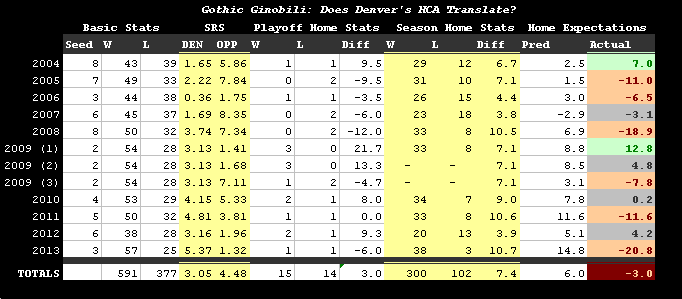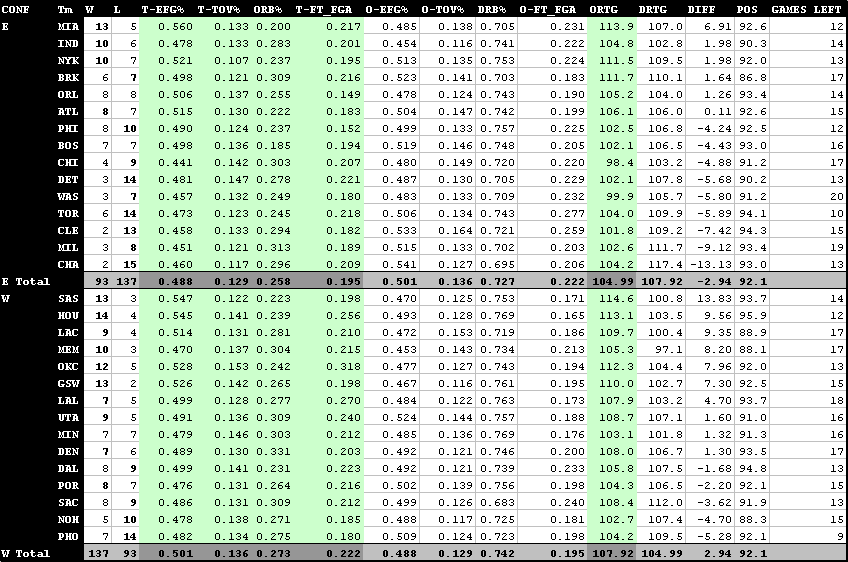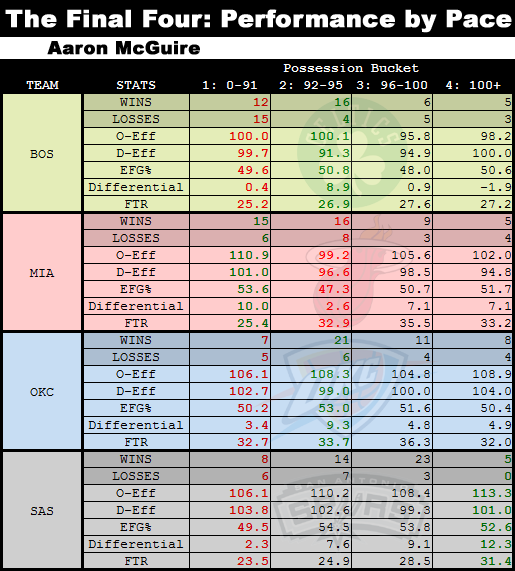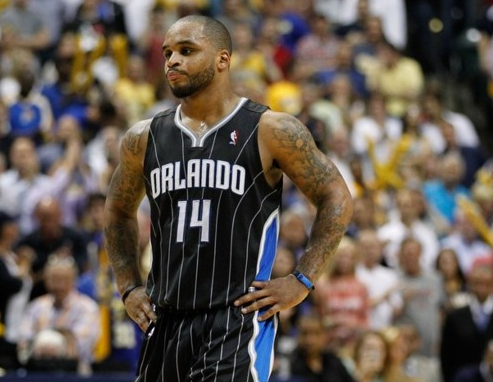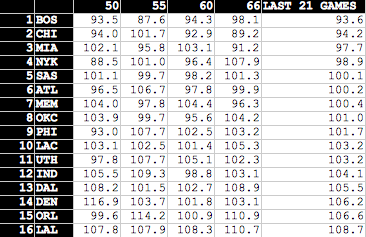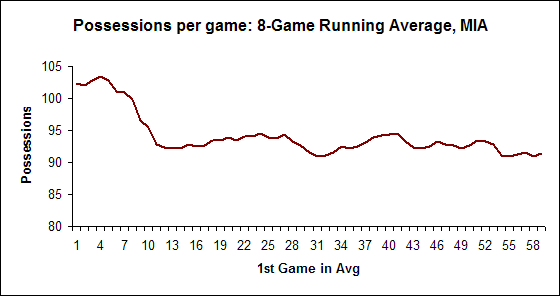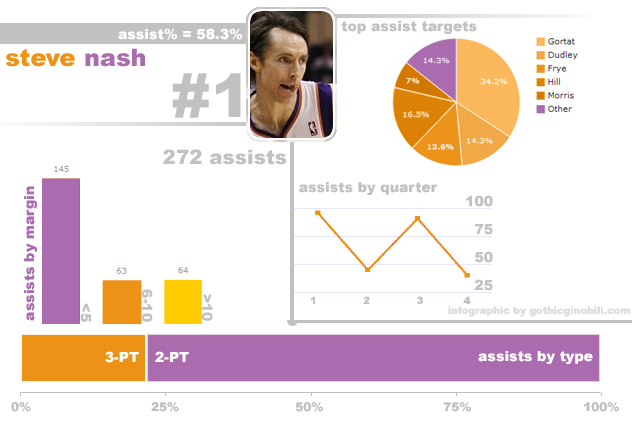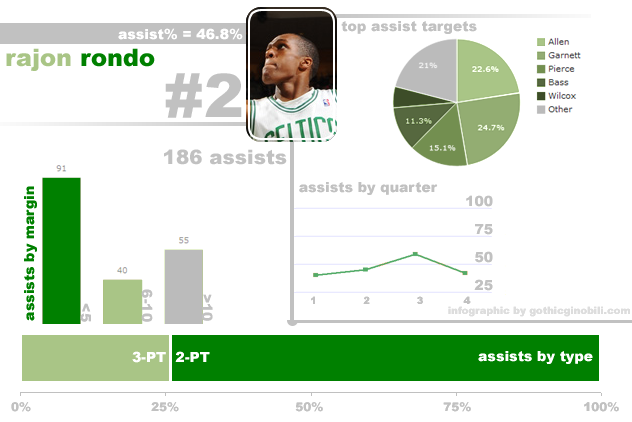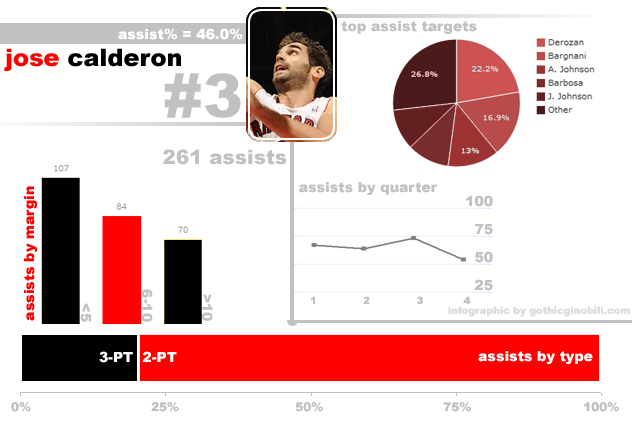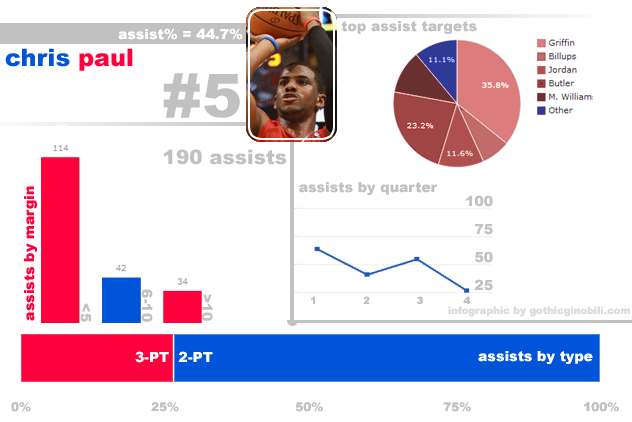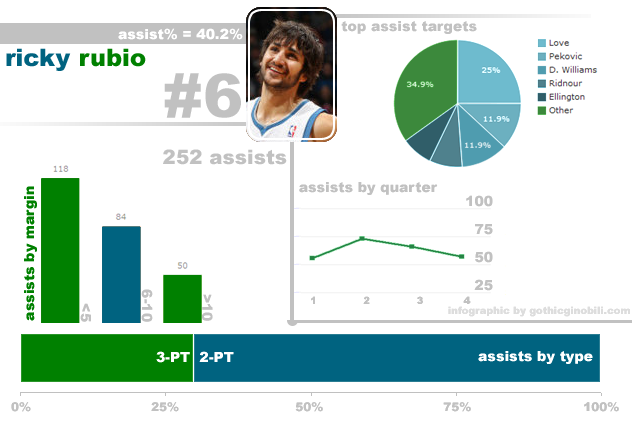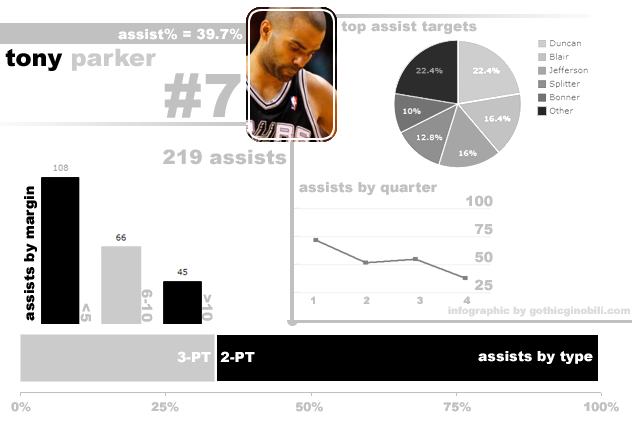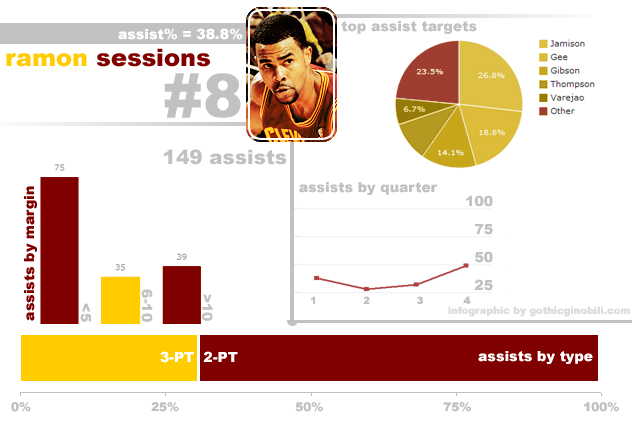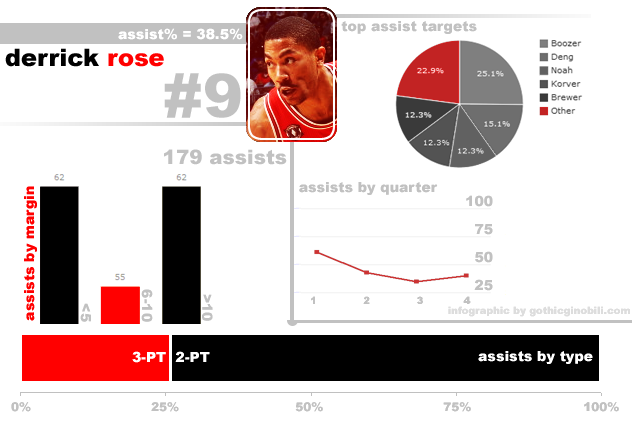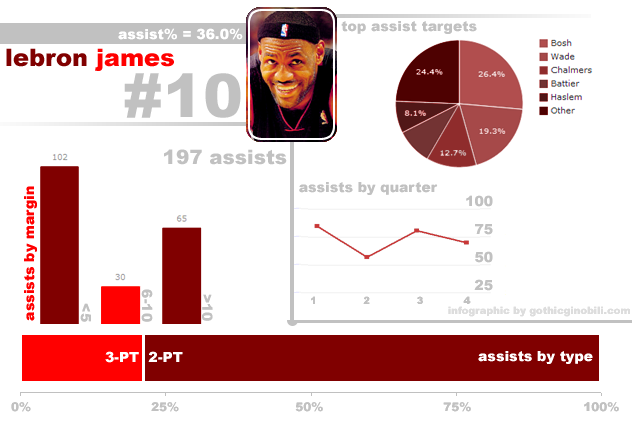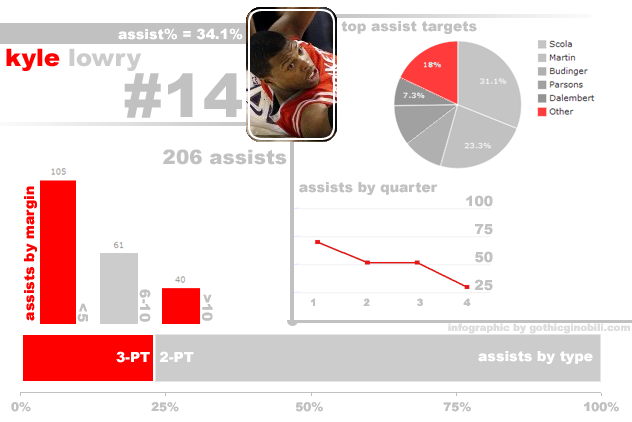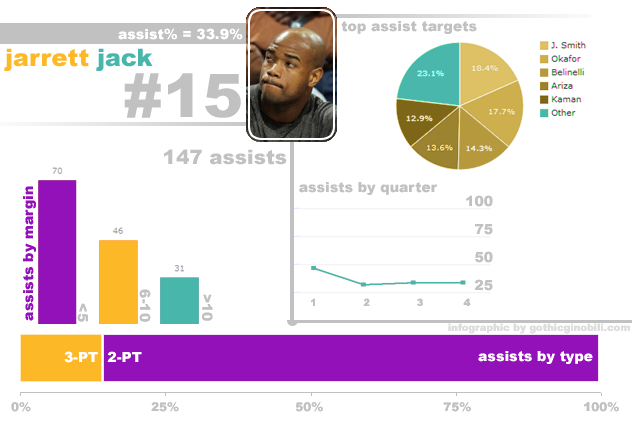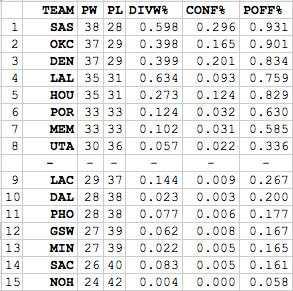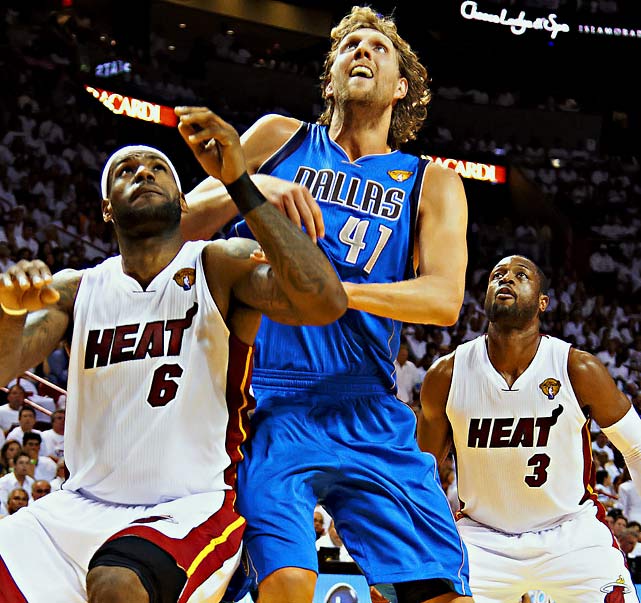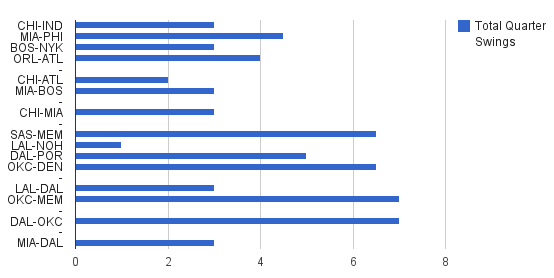Playoff Questions: Does Denver's Home Court Advantage Translate?
Posted on Mon 29 April 2013 in The Stats They Carried by Aaron McGuire
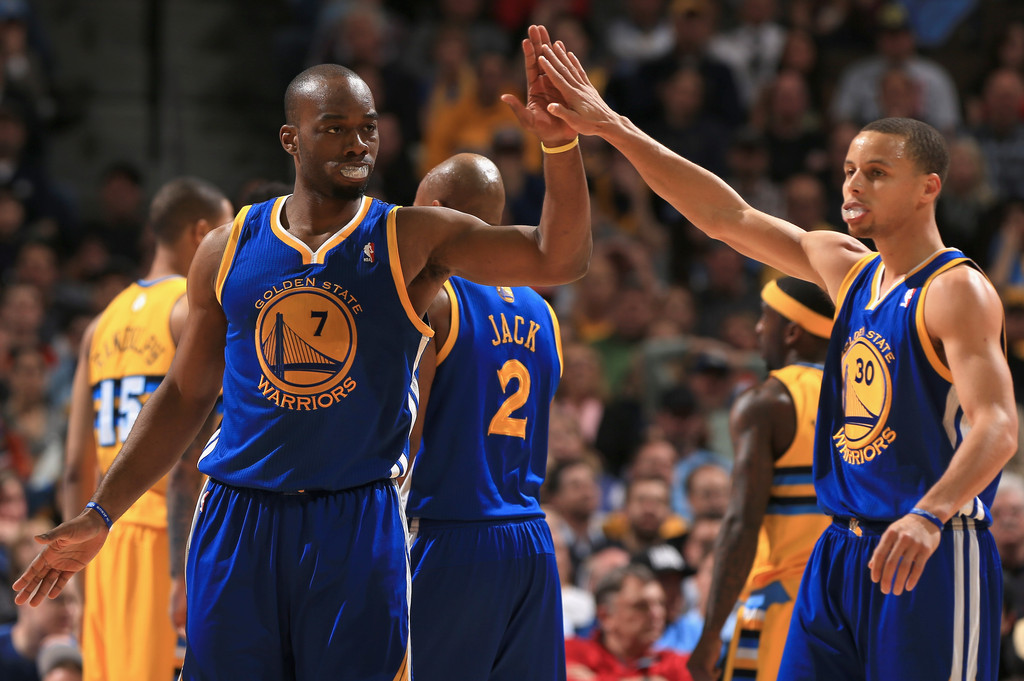
Hey, all. Aaron here. Both Alex and I have an enormous wealth of statistical expertise on our side -- I've got a degree in statistical science and work as a professional statistician in the banking industry, he has a degree in salamander geography and used a calculator once. Given this, as the 2013 Playoffs soldier on, we're planning to occasionally tackle statistical quirks and curiosities we find interesting or elucidating. Answer the questions that we forgot to ask in the first place. Et cetera, et cetera. Today's topic: Denver's mountain air. Or, more accurately, the diminishing returns thereof.
Entering the playoffs, things looked pretty simple for any garden variety prognosticator. Chalk looked poised to reign -- none of the one-through-three seeds in either conference looked even remotely prime for an upset. Teams had either finished the season strong (DEN), faced opponents that were so depressingly injured that they could solve their late-season struggles (SAS), or were simply in a class completely beyond their opponent (MIA). It just didn't look like there were going to be any upsets on the top-line -- if anything, perhaps there'd be an upset in the 4/5 spot, but those are scarcely upsets at all. Chalk, chalk, chalk. Chalk everywhere.
"Well..."
As we stand, the Warriors are on the verge of a monumental upset. Don't sell this Nuggets team short -- they won 57 games, posted a home efficiency differential that makes lambs bleat, and feature a wealth of talent with an excellent play-calling coach. The Warriors limped into the playoffs with a late season slide that took them from a contender for HCA to the verge of the eight seed -- for a short period of time, it actually looked like they were a threat to miss the playoffs. During the 2013 calendar year, the Warriors posted a regular season record of 26-25, just ONE game above 0.500 -- the Nuggets were 40-10. So you must excuse me if I'm hammering the point home a bit: this Nuggets team is a good team, and what the Warriors are doing is reasonably surprising (even if I wrote several good -- and strangely prescient -- reasons why the Warriors had a good shot at the upset in the Gothic Ginobili series preview).
One of the few things we thought we knew going into the playoffs was this: the Warriors couldn't possibly beat the Nuggets at home. That was part of why many smart analysts chose the Nuggets in 5 -- even if the Warriors match up reasonably well with the Nuggets, there was theoretically no threat of Denver dropping any of their home games in the first round. Simply impossible. The Nuggets were 38-3 at home this season. Entering their first round series, they'd won 23 straight home games. Of course, that ended up being a somewhat silly worry -- the Nuggets were a few errant calls and an Andre Miller explosion away from losing game 1, and they got thoroughly embarrassed in a game two blowout that wasn't as close as the 131-117 score made it seem. Down 3-1 with their backs against the wall, it's tough to figure out how to handicap these Nuggets. They WERE unbeatable at home -- are they, still? Or was the appearance of infallibility bunk to begin with? In our first installment of our stat-based playoff feature, I'll examine that question.
• • •
To start out, here's a bit of the "how" behind my examination. We could simply look at win-loss records to see if the Nuggets have lived up to expectations in the playoffs. That's sort of silly, though, because we have a wealth of other information. To try and take into account the severity of the effect and the true measure of Denver's home performances, we'll be looking at Denver's margin of victory in each series since the first round expanded to 4 games in 2003 -- that's 12 series results in 10 playoff appearances by Denver, so we'll have ample room to make a few observations. For each series played, I've compiled the following statistics:
-
The basic stats -- Denver's seed in that year's playoffs as well as their W/L record.
-
SRS -- Basketball Reference's "SRS" rating for both Denver and their opponent in the given playoff round. SRS is useful for this exercise because it's a pace-adjusted rating measured at a baseline of zero -- a team with an SRS of 7 is 7 points better than average, whereas a team with an SRS of -7 is 7 points worse than average. This means that you can create neutral court expectations with SRS -- that is, a team with an SRS of 2 versus a team with an SRS of -2 would be expected to win a neutral-court matchup between those two teams by four points. If they win by more, they've overachieved. If they win by less, they've underacheived.
-
Playoff & Regular Season Home Stats -- how Denver performed at home during that year's playoffs and that year's regular season. Includes playoff W/L as well as the differential in those wins and losses. Same with the regular season. Nice side-by-side look.
-
Home Expectations -- Finally, the crux of the analysis lies here. Very simple calculations, because in this case, simplicity lends itself to cleaner analysis. For Denver's "predicted" Home Court advantage, I assume that their home schedule "evened out" in any given season. That is, that their overall home court differential reflects Denver's performance against an average team at home. Then I use the difference in SRS ratings between Denver and their opponent to either add to or subtract from that predicted differential. If they're better than their opponent in SRS, that adds to their predicted home margin. If they're worse than their opponent in SRS, that subtracts from it. Then I simply show the actual playoff home differential minus the predicted home differential. In essence, that gives you a one number view as to whether Denver lived up to expectations, surpassed them, or underwhelmed in any given playoff season. Red indicates an under-performance, green indicates an over-performance, gray indicates too-close-to-call (remember, small sample size means large margin of error -- I rounded to five for this one.)
That's the rundown. Now here's your table.
A few observations to guide you through, here.
First, it's worth pointing out the obvious -- Denver has been astonishingly good at home. Over the past 10 seasons, the Nuggets have gone 3oo-102 at home during the regular season and 291-275 on the road. That's a heck of a split, and I'm reasonably sure that's the largest in the league. They've beaten teams by an average of 7.4 points per game on their home floor over, once again, the past 10 years. There's no low sample size at play in that part. That's a huge sample. They just dominate at home, period. Regular season teams have no remedy for Denver whatsoever.
Second, it's also worth pointing out the again-somewhat-obvious -- Denver isn't nearly as good at home in the playoffs. They're 15-14 at home in the playoffs over that span, and they posted an outright negative point differential at home in 6 of those 12 series outlined above. On average, they've outscored opponents by 3 points over the 29 home games in this study. Given their respective average ratings compared to their opponents and their regular season performance, Denver would be expected to outscore opponents by 6 points per game in those 29 home games. That means that the Denver Nuggets have on the whole underachieved in their playoff home games in the past decade, occasionally by large margins. (In fact, if you take out their outlier series against a wounded Hornets team in 2009, they've underachieved by an average of FIVE points per game below expectations.) Given the data, we can state with relative confidence that Denver simply isn't the same home team in the playoffs that they are during the regular season.
Something's different. But what?
• • •
I've got a few theories. None are airtight, but there's probably a grain of truth to each of them.
-
THEORY #1: The atmospheric boon of the regular season is the bane of the postseason. I used to live in the Southwest. Someday, I plan to live there again. The atmosphere is invigorating, and the hiking is sincerely beautiful. Whenever I visit home for a long period of time, I undergo a day or two of calibration before I go on any hikes or big projects. Because it takes a little while to re-acclimate myself to the air and the weather. I have a suspicion that the same is true for an NBA team. The Nuggets have all season to acclimate themselves to the invigorating mountain air of the Denver expanse. In the regular season, though, most NBA teams have one to two days to do that at the very most. In the playoffs? They have significantly more time. As an example... before their game two blowout, the Warriors were in Denver for six straight days. I think they -- and many others over the years -- simply got themselves acclimated to the Denver air. And they nullified the usual Denver advantage.
-
THEORY #2: Pace of play bears some responsibility. Over the last decade, the Nuggets have had a number of different teams. But they all seem to exhibit a similar general theme. They rely more on transition points and athletic brilliance than a methodical half-court game -- on both ends of the court! Most of the teams the Nuggets have played in the past decade have had the ability to play slug-it-out halfcourt grinds, slowing Denver to a halt and keeping fastbreak opportunities to a minimum. This obviously applies to their early-aughts playoff games against the grindhouse Spurs, but it also applies to this Warriors team. Consider -- this team relies on Iguodala to steady the foundation of a defense that's rudderless and flagging without him. But Iguodala works better in a free-flowing defensive schema. When you're facing a team that can kill you if you give even an iota of space in a prolonged halfcourt set to the best shooter in the game, a free-flowing defense like the one Karl schemed doesn't work quite as well. You need a dogged insistence on sticking to your man and keeping him from getting open, not a flowing system of switches and band-aids.
-
THEORY #3: George Karl's few flaws can be magnified in certain situations. I'm not ready to be one of the hordes of people who are shoveling dirt on Karl's grave or calling him a terrible coach based on the results of a single series, or a somewhat underachieving past. Looking at the numbers, this isn't an insanely awful trend -- it's significant but it isn't life-threatening, I suppose you could say. I'd subscribe to theories #1 and #2 far quicker than I'd entertain anyone trying to tell me Karl's a poor coach, also. Those simply seem like bigger deals to me. And when it comes to designing out-of-bounds plays and building creative offensive systems, coaches I'd rather have at my side are few and far between. ... That said, he has a few odd tics that can doom teams in the playoffs. Those who've followed the Nuggets for extended lengths of time know what I'm talking about. As a recent example from this series in particular, his tendency to ride his veterans over the young talent has almost single-handedly doomed the Nuggets in several games. Andre Miller is one of my favorite players of all time, but he can't guard Stephen Curry at all and just about everyone knows that. Karl still put him on Curry for extended lengths of time, only for Curry to go NBA Jam-type hot against Miller's wizened defense. The Nuggets needed something different, but he stuck to his guns. That's something Karl does from time to time, and it can certainly shave a few points every now and again on a low-percentage move that simply doesn't pan out.
Now, let's step back a bit. The Nuggets can still win this series. They have two home games remaining, and although they're a sub-0.500 road team, the Warriors are as prone to a bad shooting night as anyone. A 3-1 disadvantage with two of three games remaining at home isn't a death sentence. But the Nuggets are on the brink, and it's worth wondering if maybe -- just maybe -- we've been overselling their home dominance all along, all based on a few regular season trends that simply don't apply in the postseason.
Or... it's just God disguised as Stephen Curry. Take your pick, really.
Continue reading
